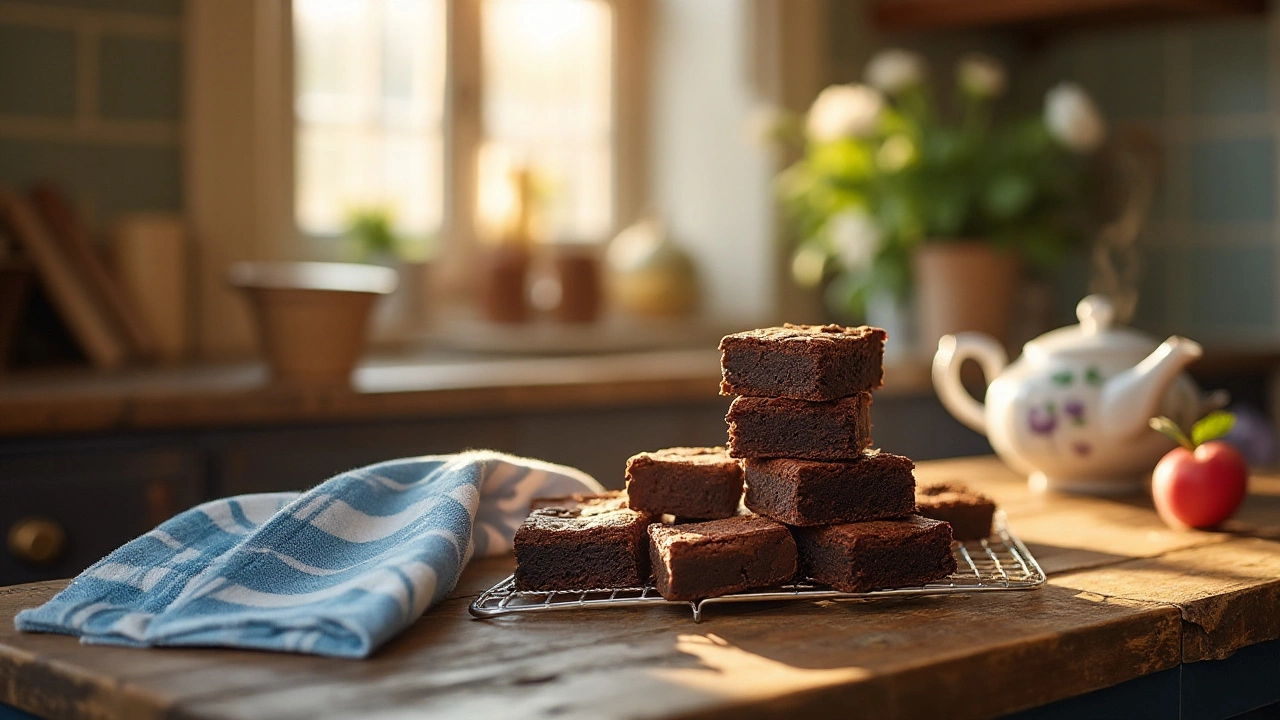
Brownies, those rich and delightful squares of chocolate bliss, have captured the hearts of dessert lovers everywhere. But once baked, a common question arises: just how long do they stay fresh? Delving into this is key, especially if you want to make them ahead of time for an event or just to savor throughout the week.
This inquiry takes us into the kitchen science of these gooey treats. Their shelf life depends on several things, from ingredients to storage conditions. In this article, we'll unravel the secrets to maintaining their delectable texture and taste as long as possible, while avoiding any disappointing stale bites. After all, no one wants to waste such indulgent sweetness!
- Understanding Brownie Shelf Life
- Factors Affecting Brownie Freshness
- Optimal Storage Techniques
- Signs Your Brownies Have Spoiled
- Extending Brownie Enjoyment
Understanding Brownie Shelf Life
When it comes to determining how long homemade brownies stay fresh, a deeper dive into the components and conditions is needed. Most homemade brownies will maintain their optimal taste and texture for about 3 to 5 days when stored at room temperature. This is thanks to their high sugar and fat content, which act as natural preservatives. Yet, the best way to keep them from becoming dry or stale involves more than just timing. It’s about understanding what makes these treats tick.
The type of ingredients used in your brownie recipe plays a crucial role. Cocoa powder tends to make brownies a bit denser and can help them retain moisture better than using only melted chocolate. If you're including mix-ins like nuts or dried fruit, be aware that these can affect the shelf life. Nuts may turn rancid over time, and fruit can introduce additional moisture, which might lead to quicker spoilage. Recipes with butter and extra eggs might also perish faster than oil-based ones due to the perishability of the dairy and proteins involved.
Interestingly, how you bake the brownies also impacts their freshness. Aim for just the right amount of doneness—over-baked brownies will dry out much faster. Go for that wonderful fudgy center to ensure the moisture lasts.
According to culinary expert Shirley Corriher, "A well-baked brownie is taken from the oven when a toothpick inserted near the edge comes out clean, but one into the center comes out gooey." This wisdom highlights the balance of textures that also helps maintain freshness. By achieving that crispy top layer while keeping a luscious interior, you extend the time over which they can be enjoyed.Breaking it down further, the portion size of your brownies adds another layer to consider. Large chunks take longer to lose moisture compared to smaller pieces, making them stay fresher. Another scientific touchpoint is sugar, an important player not just for sweetness but for preservation. Sugar adds hygroscopic properties, which means it can hold onto moisture, extending the delightful lifespan of your dessert by protecting it from quick drying.Once they've come out of the oven and cooled, how you store them drastically influences the time they remain delicious. It's not just about throwing them in any container; choosing airtight options is key. Exposure to air can lead to oxidation, catalyzing spoilage and degrading flavor. For those living in humid climates, you may notice a much shorter time frame for keeping brownies at room temperature. In these cases, avoiding moisture absorption is vital to prevent microbial growth, such as molds, which thrive in damp conditions.
In short, understanding the shelf life of brownies involves a blend of knowing your ingredients, perfecting your baking technique, and ensuring proper storage. By paying attention to these factors, you can savor the rich, chewy decadence of brownies for much longer, avoiding the disappointment of realizing your batch has gone bad.
Factors Affecting Brownie Freshness
The delightful taste and texture of brownies can be affected by several subtle, yet significant factors. At the heart of this preservation issue lies the ingredients used in the recipe. Brownies made with butter or margarine might firm up more quickly compared to those using vegetable oils, which tend to keep them moist for longer periods. It's a tiny twist in the recipe that makes a noticeable difference. Likewise, the inclusion of ingredients like nuts or cream cheese could influence freshness due to their susceptibility to rancidity or spoilage over time. Temperature, both in baking and storage, plays a critical role too. Browning them a tad too much during baking may lead to a dry, crumbly texture sooner than expected.
This brings us to the humidity factor. Humid environments can offer a boon or a bane, by keeping brownies moist, or encouraging mold growth, respectively. Storing brownies in an airtight container helps balance these effects, preserving moistness and preventing absorbing undesirable odors from other foods. Conversely, high altitudes might demand tweaking your recipes as they often speed up the staling process. As food writer and scientist Harold McGee once noted, "A hot, dry environment can accelerate staleness, urging us to shield our treats from its dehydrating clutches."
Lastly, don’t underestimate the impact of wrapping techniques. Less tightly sealed parcels may expose brownies to air, causing them to dry out sooner than tightly wrapped or vacuum-sealed ones. Testing different combinations of wrapping materials like plastic wrap, foil, or even beeswax wraps might reveal unique results in maintaining their freshness. All of these elements combined create a multifaceted picture of how our beloved brownies remain as delicious as the day they were made.
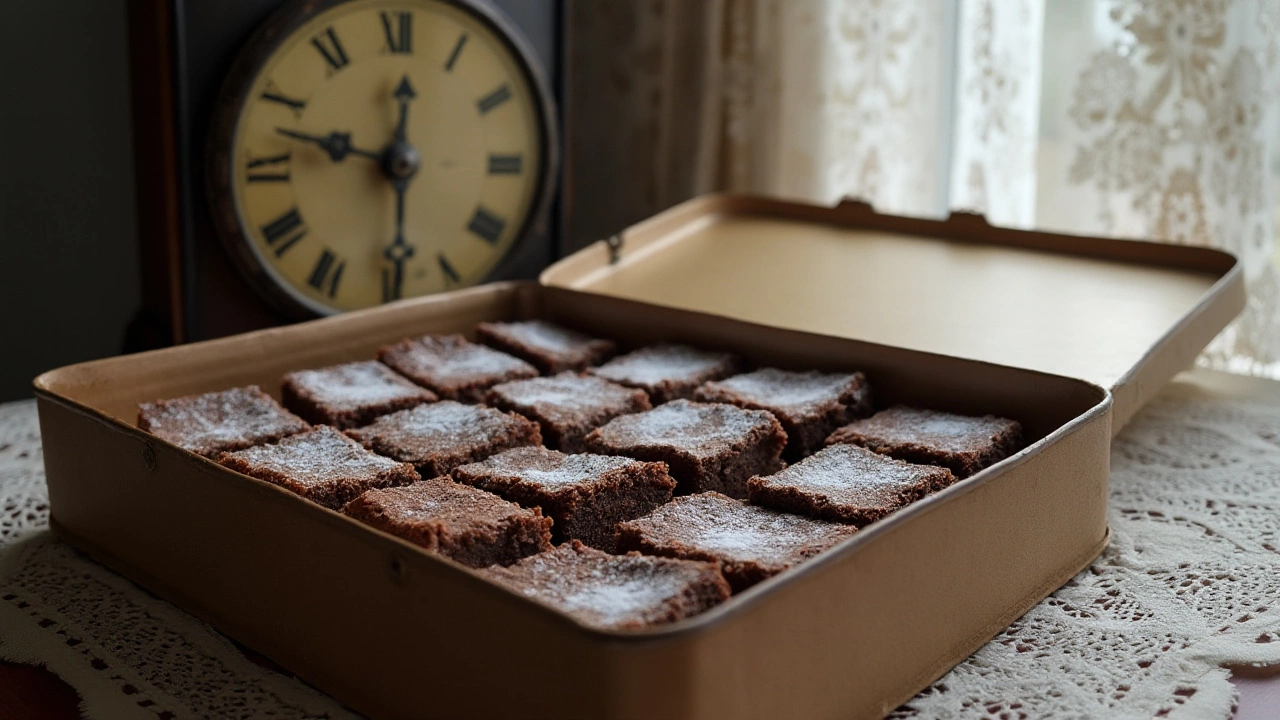
Optimal Storage Techniques
When it comes to keeping your homemade brownies fresh and delectable, storage techniques are key. Whether you’ve baked a decadent batch for a special occasion or simply to enjoy at your leisure, knowing how to store them properly ensures they retain their moist texture and rich flavor. First and foremost, let’s talk about wrapping. Properly wrapping your brownies is crucial; exposure to air quickly dries them out. Use plastic wrap or aluminum foil to tightly seal them, locking in their signature fudgy texture and flavor. It’s like creating a little cocoon where they stay good as new. Some bakers opt for airtight containers, which is another excellent choice, especially if you plan to stack them. This way, even if you have multiple layers of brownie heaven, each bite stays just as fresh as the day you baked them.
For those looking to keep their brownies more than just a few days, refrigeration might be your best friend. The cool temperatures help slow down spoilage and can extend their shelf life by several days. Just remember, cold brownies might lose some of their softness. To remedy this, simply pop them in the microwave for about ten seconds, and you’re back to gooey perfection. A lesser-known trick is to add a slice of bread to the storage container. The bread absorbs excess air moisture, preventing the brownies from hardening. By the time you enjoy your brownies, the bread might be toast, but your brownies will thank you by staying incredibly fresh.
But sometimes, the magic of brownies is best preserved through freezing. Yes, you can actually freeze these chocolatey treasures. Wrap them individually in plastic wrap, then combine them in an airtight container or a large zip-lock freezer bag. This layered protection ensures freezer-burn is kept at bay, maintaining texture and taste. When it’s time to indulge, thaw at room temperature, or for a quick fix, utilize the microwave again for that just-out-of-the-oven feel.
The key to perfectly stored brownies often lies in the method of individual wrapping, says iconic chef and dessert maestro, Julia Baker, "Preventing air from getting in contact with your brownies is paramount; it’s what keeps them so indulgent when you’re ready to sneak that bite."With these techniques, you can enjoy your delightful desserts for weeks.
Let’s not forget a quick word about temperature and environment. Store your brownies away from direct sunlight and heat sources. These conditions accelerate spoilage and might lead to an off taste. Opt for a cool, dark place if you don’t have a fridge handy. If you’re planning to gift your baked goods or bring them to a potluck, consider a cooler bag to transport them. It’s about ensuring they taste as good in someone else’s kitchen as they do in yours. A simple table can help you remember storage times:
| Storage Method | Shelf Life |
|---|---|
| Room Temperature | 3-4 Days |
| Refrigeration | Up to 10 Days |
| Freezing | 3 Months |
By following these optimal storage techniques, those delightful little squares of joy will remain just as perfect as when they exited the oven. With a bit of care and thought, you’ll enjoy their rich, fudgy goodness day after day.
Signs Your Brownies Have Spoiled
Picture this: you've just returned home from a busy day, and you crave the warm embrace of a chocolatey treat. You reach for those once moist brownies, but something seems off. How do you really know when your beloved brownies have edged past their prime into the territory of no-go? Let's dive into the telltale signs, and next time, you'll be a pro at deciphering their condition. The first sign is an obvious change in texture. Fresh brownies are typically soft, dense, and slightly gooey depending on the recipe. As days pass, these attributes can shift towards dryness and crumbly edges. If they feel more like sandpaper in your hand than a delightful dessert, it's a red flag. But don't stop there. Give those brownies a closer look and smell.
Another indicator is appearance. Discoloration such as excessive darkening or white specks can mean the storage hasn't been conducive. These visual cues highlight potential mold growth or a sugar bloom which can appear when they've been exposed to fluctuating temperatures. Speaking of mold, check for any fuzzy spots forming on the surface—definitely a sign to toss those brownies out. The olfactory senses also play an important role. If they emit an off, sour, or just plain odd smell, it's best not to risk a taste. According to advice from renowned chef and food safety expert Sarah Hill, "Trust both your eyes and nose; if they're sending you warning signals, follow them."
For those who enjoy collecting data points, consider maintaining a tasting journal with a simple scoring system for your freshness checks. Record the day baked and rate them on texture, taste, and smell over successive days. This not only hones your detective skills but can also be a fun way to interact with food. Let's not forget the taste test—the ultimate assessment. If upon tasting, the flavor has faded into staleness, a graininess overshadows smoothness, or there's just a bitter or odd bite to them, then the conclusion is probably imminent: it's time for a fresh batch. Now, if you proudly own a small brownie business, a handy chart tracking shelf life at different storage conditions could help. Here’s a simple example:
| Storage Condition | Expected Shelf Life |
|---|---|
| Room Temperature (in an airtight container) | 3-4 days |
| Refrigerator | Up to 1 week |
| Freezer | 1-2 months |
Ultimately, a key takeaway is that attention to these sensory signs not only saves you from a less-than-pleasant taste experience but also protects your health. While these chocolate gems do have a fairly decent shelf life with proper storage, they’re best enjoyed within the fresh time window for that unforgettable bite. Keep these guidelines in mind, and you'll always know when your cherished treats are still great, or if it’s time to turn to your trusty mixing bowl for round two.

Extending Brownie Enjoyment
There's nothing quite like the satisfaction of biting into a freshly baked brownie—dense, chewy, and bursting with rich chocolate flavor. However, the trick to experiencing this pleasure well beyond the baking day lies in understanding and utilizing effective preservation strategies. It might surprise some, but proper storage can significantly impact how long your homemade brownies remain a source of joy. To start, the key is ensuring that they are well-sealed from air exposure. This can be achieved with airtight containers or plastic wrap, which prevents the dreaded staleness.
One popular method for extending the life of your brownies is refrigeration. While it might slightly alter the texture, making it a tad more dense, the low temperature helps keep microbial growth at bay. If you plan to consume them within a week, this is a reliable option. Some claim that refrigerating even brings out the flavors more intensely. However, if you're not planning on eating them right away, freezing is the champion option. Wrap the brownies individually in plastic wrap, then store them in a larger freezer-safe bag to keep them fresh for up to three months.
"There’s something magical about unlocking a batch of your own brownies months later," says Agnes Sylvester, a renowned pastry chef, "you just need to thaw them gently at room temperature or give them a minute in a preheated oven." This touch of heat can almost recreate the fresh-from-the-oven allure.Considering these strategies, it’s wise to label and date your packages to remember their age, ensuring you enjoy them at peak quality. For those concerned about the integrity of flavors over time, enhance your brownies with toppings only when you're ready to serve them, keeping their core taste unaltered.
Various factors determine how well brownies preserve, from their ingredients to the environment they’re kept in. If you incorporate perishable toppings or fillings like cream cheese or fresh fruits, their shelf life would naturally be shorter. Thus, for the simplest longevity, sticking to classic recipes is often best. For an additional creative touch, consider cutting your brownies into specific shapes or sizes before freezing. This makes them more convenient for individual servings later.
A surprising fact about brownie storage is using brown sugar instead of all white. It can subtly help retain moisture, thanks to its molasses content, allowing a moist crumb even after days of storage. Many seasoned bakers advocate this tiny tweak for enhanced freshness without altering the taste significantly. Embracing these strategies can bring you few steps closer to not just extending your brownie shelf life but enhancing your indulgence with each bite.


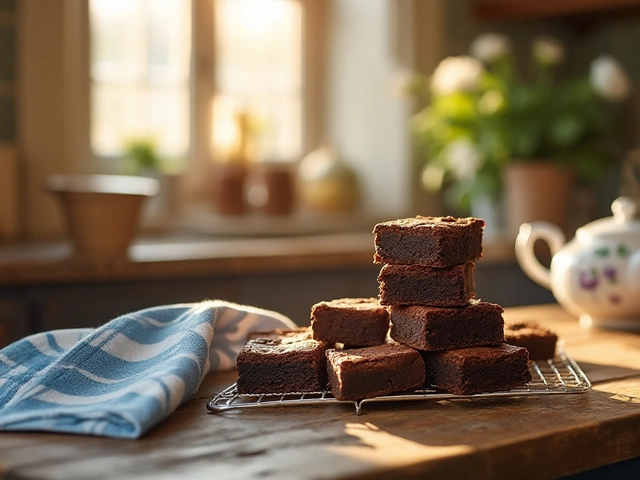
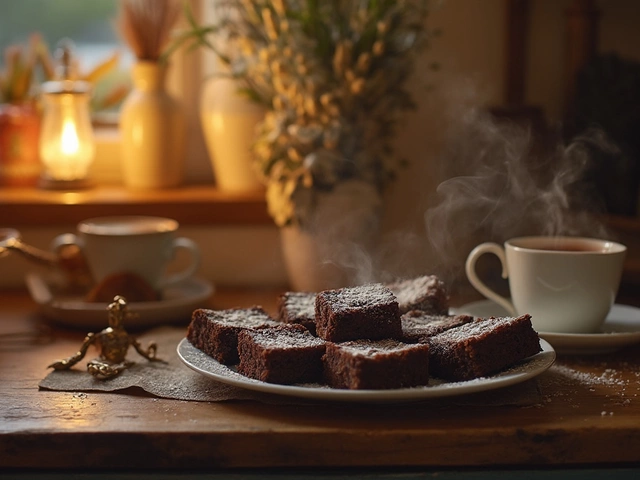
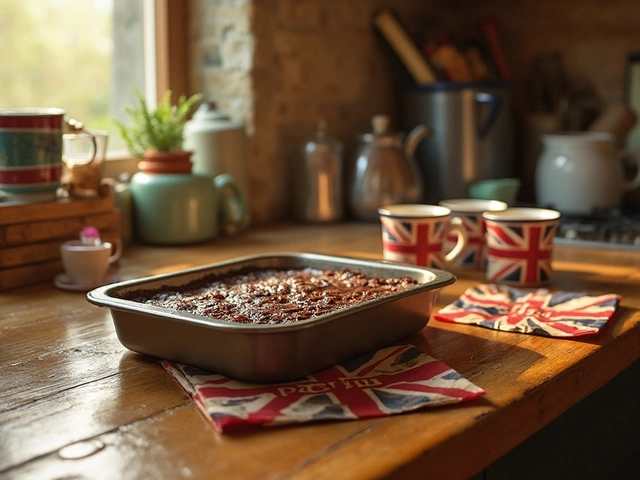
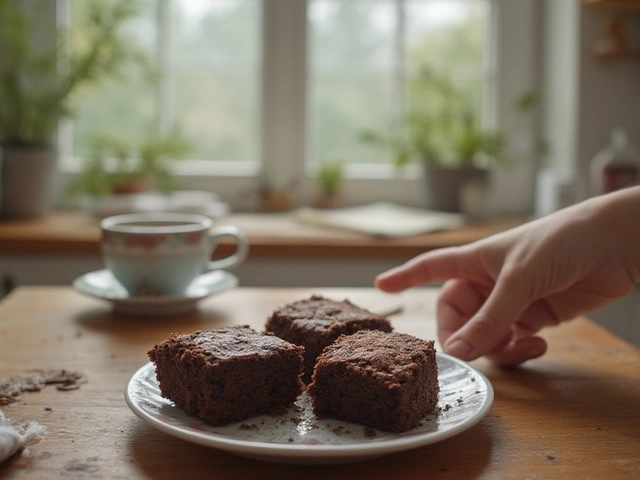
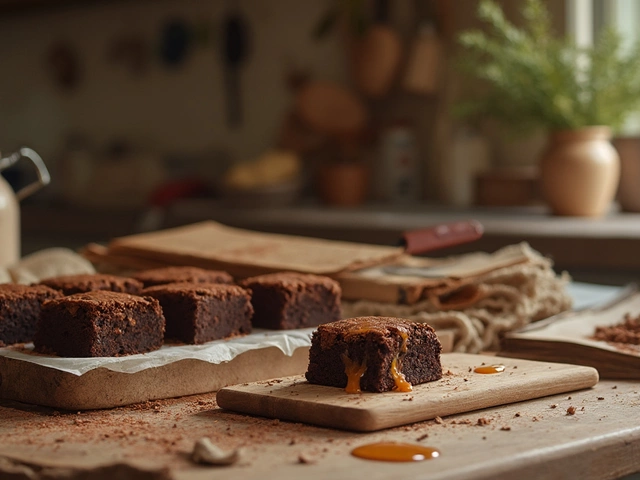
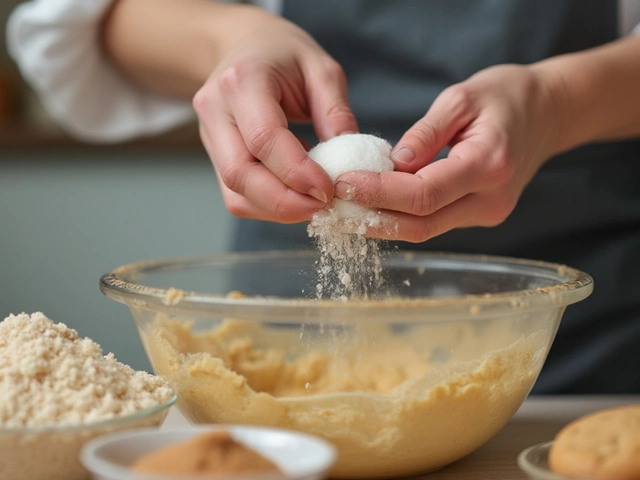



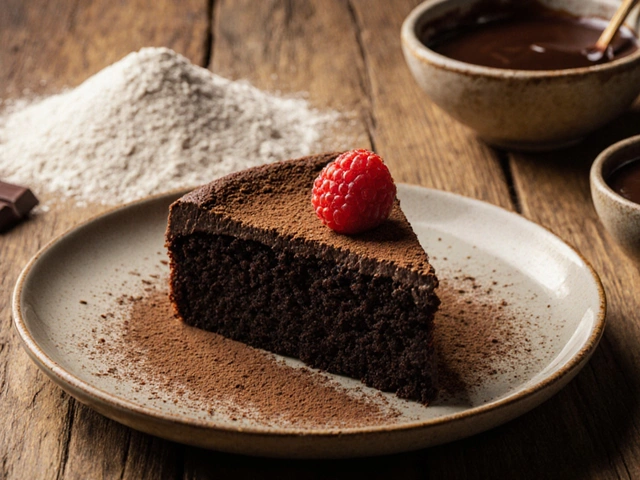
Write a comment